BAR GRAPH 16/7/2024
1/5
Earn XP
Description and Tags
Practice paraphrasing
Name | Mastery | Learn | Test | Matching | Spaced |
|---|
No study sessions yet.
6 Terms
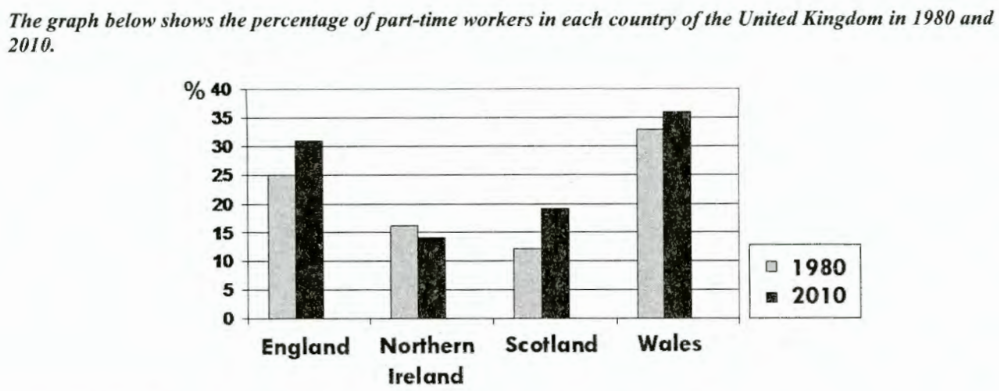
Overview: Overall, it is apparent that the percentage of people who work part-time rose in most countries, except for Northern Ireland.
Overall, it is apparent that the proportion of part-time employment increased in the majority of countries, with the exception of Northern Ireland.
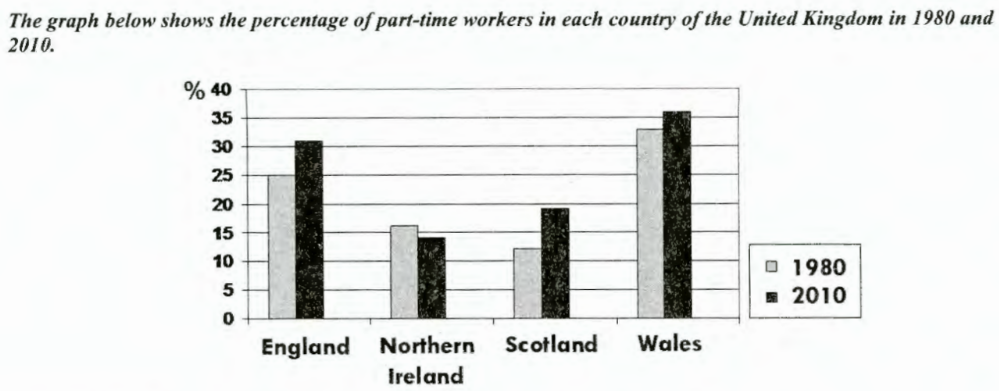
There is a noticeable rise in the proportion of part-time workers in Wales, England, and Scotland. Wales had the predominant part-time worker population in both years, with fairly similar figures, approximately 34% and 36% respectively. (remove the first sentence, use a phrase to connect the overview and the next paragraph)
In details, Wales had the predominant part-time worker population in both years, remaining fairly stable, with a slight increase from approximately 34% to 36% respectively.
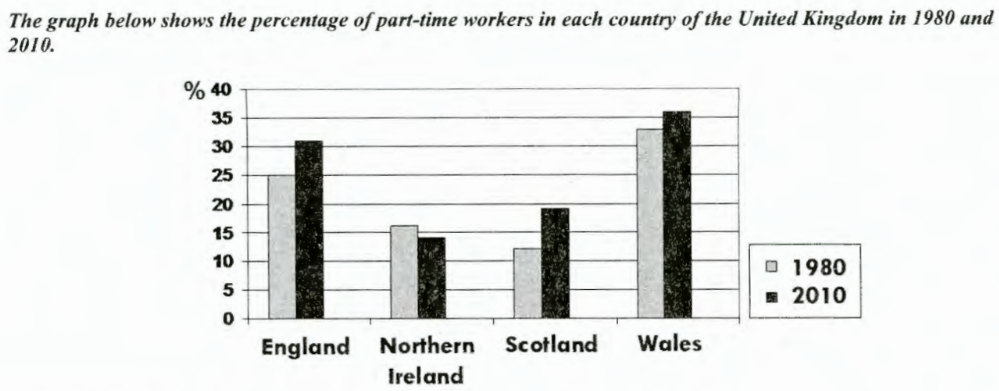
Wales had the predominant part-time worker population in both years, with fairly similar figures, approximately 34% and 36% respectively. (unclear)
In details, Wales had the predominant part-time worker population in both years, remaining fairly stable, with a slight increase from approximately 34% to 36% respectively.
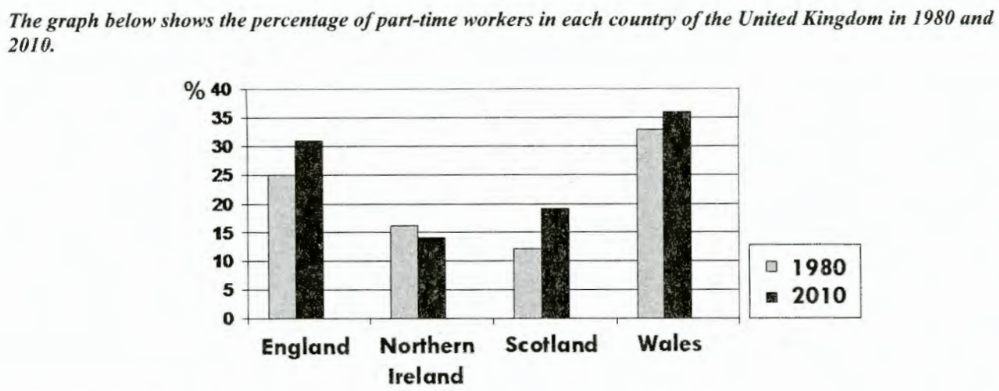
Whereas England came second, with people working part-time accounted for 25% in 1980 and above 30% in 2010. ( not connect to the overview, we need to indicate a rising trend here.)
England followed, with the proportion of part-time workers rising from 25% in 1980 to over 30% in 2010.
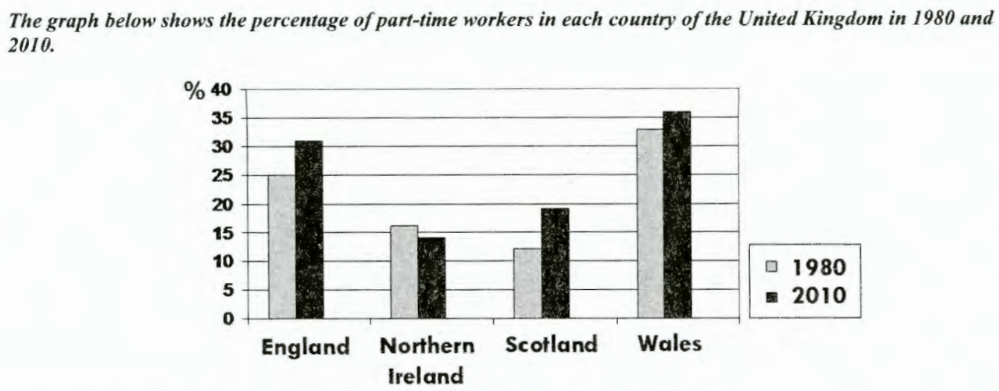
On the other hand, Scotland, despite having the smallest part-time worker population of these three (we should put a static here), witnessed the most significant growth, from around 12% in 1980 to nearly 20% in 2010.
On the other hand, Scotland, which had the lowest percentage in 1980 at 10%, witnessed the most substantial growth among the four countries, from around 12% in 1980 to nearly 20% in 2010.
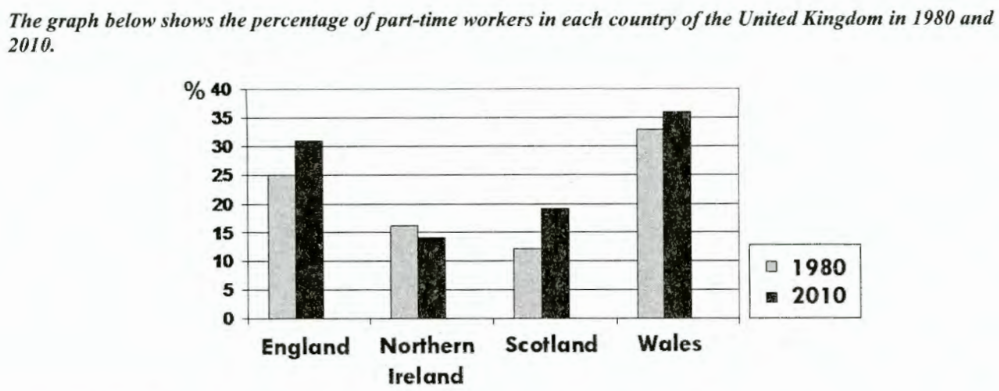
In contrast, although Northern Ireland had more part-time workers than Scotland in 1980, 15% compared to 12%, it experienced a slight decreased and hit a low of 14% in 2010. (should include a comparison about the general trend between Northern Ireland and the other three countries)
In contrast, although Northern Ireland had more part-time workers than Scotland in 1980, 15% compared to 12%, it experienced a marginal decline and hit a low of 14% in 2010. This decrease is notable as it stands in opposition to the general upward trend observed in the other three countries.